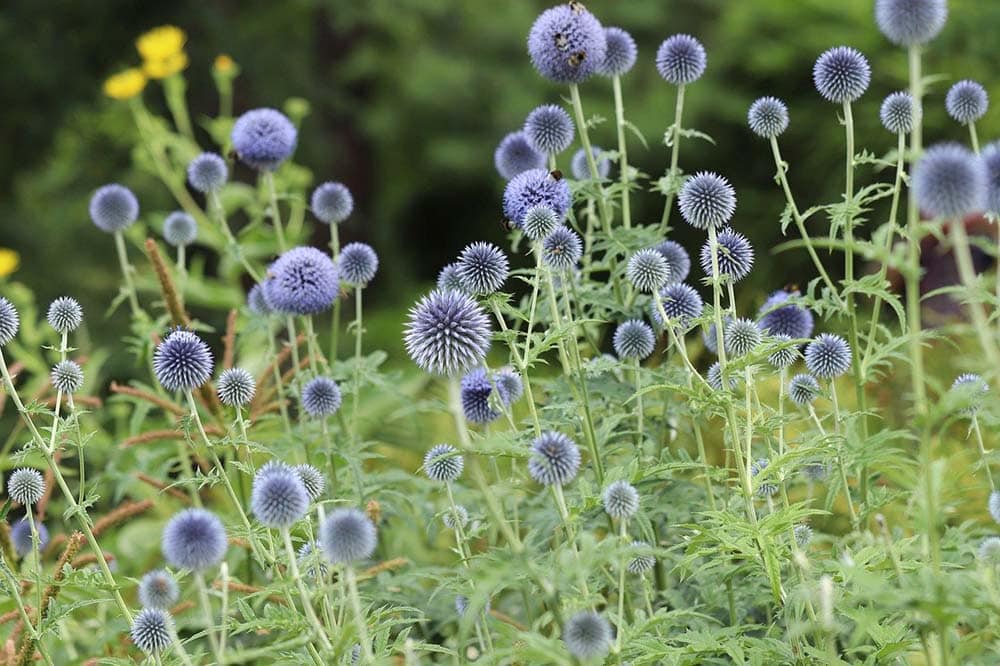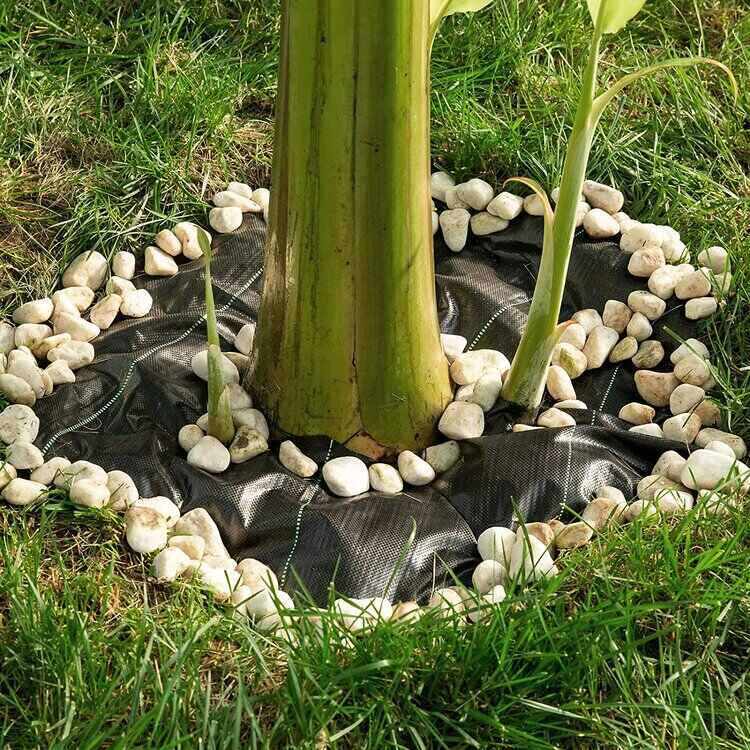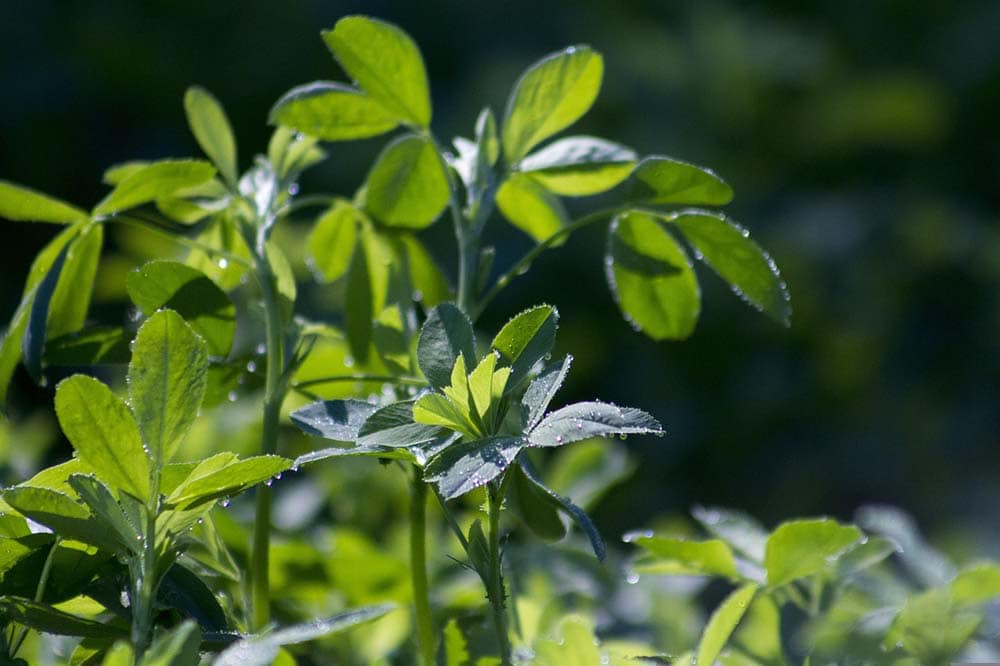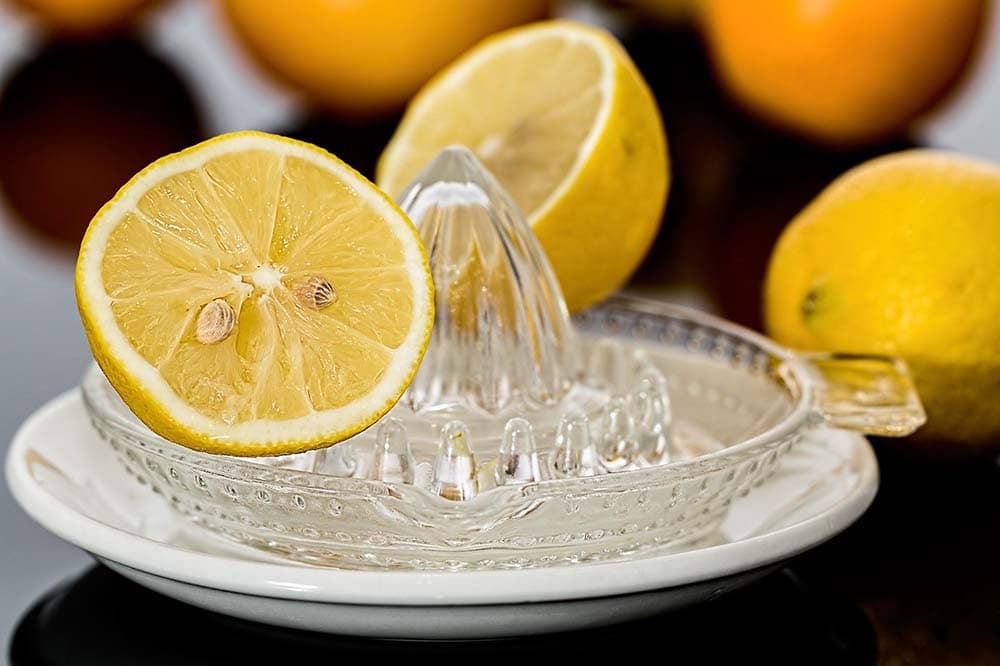How to Get Rid of Thistles: 10 Easy Ways
-
Pete Ortiz
- Last updated:

Every gardener knows how problematic weed and thistle growth can be for a backyard. These awful, persistent plants ruin your landscape and take away the necessary nutrients your beloved plants need. In the fight against thistles, you’ve probably witnessed many unsuccessful tips and solutions, and now you are looking for methods that will help you eradicate these annoying weeds for good.
While some methods against thistles are more aggressive, others are long-term and require patience and persistence. Each technique offers something for any gardener and some may be best paired together. In the article below, you can find a list of the 10 most effective solutions against thistles.
The 10 Easy Ways for Getting Rid of Thistles
1. Mowing Thistles Before Bloom

To prevent the thistle plants from developing and spreading their seeds, it would be a good idea to mow the lawn—including thistles—right before blooming. Start mowing the lawn regularly at the beginning of spring and continue carrying out this habit whenever you notice new growth. Another tip you can use to harm the thistles in an entirely natural and safe way is to mow the lawn right before heavy rain. Cutting the thistles at the base and exposing them to a large amount of water can promote fungi development or rotting roots, preventing the plant from regrowing.
- When you notice thistles growing rapidly and developing the first flower bud, that’s the ideal time to start mowing your lawn. It is essential to do this right before the flowers bloom to ensure the seeds don’t spread around your yard, creating an even bigger problem.
- You may need to repeat this approach numerous times during the season, so it may be wise to pair this method with a weed killer.
2. Homemade Gin Solution
The homemade solution made with gin is an excellent recipe for killing unwanted weeds, including thistles, in your garden. This solution is effective because it targets plants at their roots, damaging them and preventing their growth. This recipe is incredibly easy to make, with only just a few ingredients you can find in your kitchen. After using the gin solution on the affected areas of your lawn, pull out all the thistles from their roots. Once you repeat this process, it is sure to bring you some positive results.
- Create a homemade solution by mixing one tablespoon of vinegar with one tablespoon of liquid soap and one tablespoon of gin. Dilute the solution with 1 quart of water.
- Using this solution on a sunny day is best and pull out the thistles from their roots after using it.
3. Vinegar

Applying vinegar to thistle plants and other weeds may be the most effective and effortless natural solution. The most important thing to remember when using vinegar in your fight against thistles is to be persistent and patient. This method will take anywhere from a few days to a week to eliminate thistles. At first, they may reappear in the same places constantly, which is why it is essential to spray them with vinegar as soon as you notice any regrowth.
Since thistles are persistent plants, you can always go for a stronger solution and pick up 20% white vinegar instead of the standard 5% vinegar.
- This solution doesn’t require mixing or dilution; simply pouring white vinegar into a spray bottle and spraying it on the affected areas. Spray the thistles on a sunny day until the plants are soaking in vinegar.
- Repeat the process as many times as needed.
- After thistles are dry and dead, remove the roots and throw them away.
4. Remove Them Manually
If thistles grow in the form of isolated patches in your garden, removing them manually is a sure way to get rid of them for good. Since thistles grow deep root systems, this process may take some time and effort, but in the end, you will know that no thistle roots are left in the ground. For this process, you can remove them by hand or use a tool to assist you.
You can use shears, spades, or trowels to dig, cut, and remove thistle roots. The most important thing to remember when choosing this method is to be thorough and detailed—removing every part of the plant is crucial.
- Using your selected tools, dig out the base of the plant, lift the roots and throw them in a garbage bag.
- Because thistles can regrow out of any part of the plant, you must pick up and toss out everything you see lying on the ground—leaves, stalks, shoots, and roots.
- After you are done removing thistles from your garden, it is crucial to clean all your tools with soap and water thoroughly.
5. Plastic Sheeting

Another way to fight thistles naturally if they grow in isolated patches is to overheat them for a few weeks. This is one of the best ways to ensure you kill the plant at the root and prevent regrowing. The best method is to cover the isolated thistle plants with a plastic sheet, which will accumulate the heat from the sun, suffocate the plant and kill the root system. Before covering the plants with a plastic cover, mow the lawn and remove as many thistles as you can by hand or with tools.
- Place a plastic sheet over the mowed thistles and leave it there for 2–3 weeks. If thistles keep regrowing after that period, leave the sheet for another week.
6. Weedkiller Herbicide
Using weedkiller herbicide may be an effective solution to killing already existing thistle plants, but it can’t stop the spreading of seeds and new growth. That is why it is important to pair this method with regular mowing. It would be best to treat the whole yard using this type of herbicide to prevent the growth of thistles or any other weeds.
- Follow the instructions on the container, and weaken the herbicide solution with water in the recommended ratio.
- Use a watering can or a pump sprayer.
7. Plant Competitive Plants

One of the best plants you can grow to reduce thistle growth is Alfalfa. This plant is most effective against the fight with thistles, especially when planted right next to them. Alfalfa collects all the nutrients from the soil and the surrounding plants, preventing thistles from developing even before they sprout. This solution is a long-term one, and there are many possible plants you can use. Alta Tall Fescue and Troy Bluegrass are other solutions that may work just as well as Alfalfa. Using any of these plants can eliminate thistle problems effectively over the years.
- Spread the seed on the soil around the thistle plants and rake the area. You can additionally compress the ground and the seeds by using a roller. Water the seeds three to four times a day.
8. Insects
Insect infestation of thistle plants may be another natural way to eliminate these weeds. The stem mining weevil is a common insect that can serve as an excellent fighter for this cause. This bug will eat the thistle plants and leave larvae inside the thistle’s stem. The larvae will hatch and continue the cycle through the lawn, killing every last thistle plant. Another excellent option for this project would be the thistle gall fly, although this insect is challenging to acquire.
- Buy a few hundred stem mining weevil bugs and allow them to nest in your garden, specifically on the thistle plants. They will begin their vicious cycle and start killing one thistle plant after another.
9. Lemon Juice

Lemon juice is another fantastic solution that acts similarly to vinegar when sprayed onto plants. Lemon juice has high acidic levels, which dry out the plant and prevent it from acquiring any moisture. To ensure you get the most from this solution, lemon juice is best when paired with vinegar. You can repeat this procedure when needed, preferably once a week. After thistles are dried and dead, you can pull them from their roots and dispose of them.
- Simply mix lemon juice with distilled vinegar and pour the solution into a spray bottle. Cover the entire plant surface with the solution and pull its roots from the ground after the plant is dead. Spray the thistle plants once a week, preferably during a warm sunny day.
10. Livestock
Another entirely free, natural, and effortless solution is letting your livestock graze on the thistle plants. Animals such as goats, cattle, and even chickens love to munch on these plants, but be careful not to allow them to consume large amounts, as thistles can be toxic to some livestock. Certain animals will adore eating this plant, so if you own a farm, it would be a good idea to let your animals solve this problem. Another crucial thing to remember is to not treat the thistle plants with harmful herbicides before letting your animals feed on them.
- Let your animals feed on thistles. While they can’t eradicate this plant, they can help control the problem while you find an additional natural solution.
Thistle Prevention Tips
Other than treating thistles where they tend to appear and regrow, treating your lawn with preventive care would also be a good idea. Taking all the necessary precautions may eliminate the risk of weeds growing on your lawn and creating a long-term problem.
- Fertilize your lawn regularly, at least once a year.
- Spread a thick layer of mulch on top of the soil to prevent the sunlight from reaching the weeds, which prevents them from growing again.
- Raise the soil’s moisture since weeds and thistles don’t usually grow on damp grasslands. Dry patches where grass doesn’t grow are a perfect environment for weed growth.
- Aerate the soil by spiking the surface. Once you promote healthy grass growth, weeds won’t grow in those places anymore.
- Scarify the soil so that grass can consume more air, water, and nutrients.
Final Thoughts
After reading this article, we encourage you to go ahead and try any of these solutions and see for yourself how effective and strong they are. Staying determined and repeating the process a few times is important until you get the best results. After a few weeks, you will see a great outcome—a clean and tidy, thistle-free garden filled with only your favorite plants and herbs.
Featured Image Credit: Annette Meyer, Pixabay
Contents



